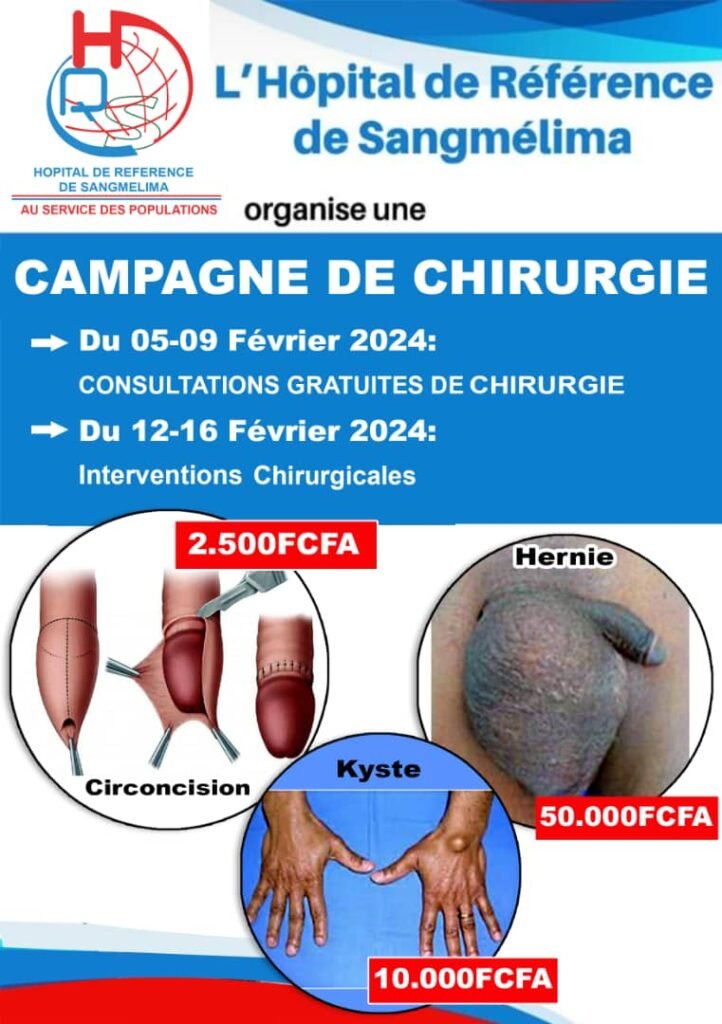Drug Use Health Minister Unveils National Plan to Combat Rising Drug Use

According to the Ministry of Public Health, Centers for Care, Support, and Prevention in Addiction (Centres de Soins, d’Accompagnement et de Prévention en Addictologie), CSAPA received 2057 patients in 2023, including 1125 new cases. Analysis of this data reveals that: the 19-32 age group is most at risk, 96% of the cases recorded are single, 68% of the subjects are still at school and 41% are inactive or have no occupation.
These figures were released recently by the Minister of Public Health, Dr Manaouda Malachie, during a press briefing. On this occasion, Minsanté unveiled the 20242030 National Strategic Plan for the Fight against Drugs.
In Cameroon, drug use is more common among boys than girls. The main drugs used are cannabis, alcohol and stimulants. The reasons given for drug use are peer pressure, boredom and thrill-seeking. As part of the fight against drug use in Cameroon, the Minister of Public Health, Dr Malachie Manaouda, presented the National Strategic Plan to Combat Drugs in Cameroon by 2030 on Thursday 11 July 2024. This statement comes on the heels of the adoption of the National Strategic Plan to Combat Drugs 2024-2030, and is part of the commemoration of the International Day against Drug Abuse and Illicit Trafficking, under the theme: “The facts are clear! Invest in prevention”.
With this theme, the Minsanté is launching a strong appeal to raise awareness, with a view to improving understanding of the effectiveness and cost-effectiveness of evidence-based prevention strategies. Dr Manaouda Malachie calls for emphasis to be placed on the impact of the actions developed and on reducing the harm caused by drug use. “The pretext which brings us together and which forms the basis of this communication is rooted in the need to raise awareness on the occasion of the commemoration of the International Day against Drug Abuse and Illicit Trafficking, or World Drug Day, generally celebrated on 26 June each year”, said the Minister of Public Health.
Drug use, combined with other substances such as alcohol, is not without repercussions for physical health. The reports on treatment at approved centres show another consistent pattern: somatic, psychiatric and social complications, the most common of which are amotivation syndrome, cognitive disorders, sleep disorders and withdrawal syndrome.
According to the member of the government, in 2023, the Centres de soins, d’accompagnement et de prévention en addictologie (CSAPA) received 2057 patients, including 1125 new cases. Analysis of the data reveals that the 19-32 age group is most at risk, that 96% of the cases recorded are single, that 68% of the subjects are still at school, and that 41% are inactive or have no occupation. Significantly, 87% of those affected by drug use live in urban areas.
Overall, the available data suggest that the annual prevalences are 72.4% for smoked tobacco, 72.4% for smoked cannabis, 79.3% for alcoholic beverages and 50.5% for tramadol. Psychiatric co-morbidities include 8% personality disorders, 13% substance-induced psychotic disorders, 5% major depressive disorders, 5% panic disorders, 22% self-harm, 55% dependence and 17% substance abuse. In 65.73% of cases, users of psychoactive substances were seeking personal balance. It is important to note that, according to figures from the National Committee to Combat Drugs (CNLD), the number of patients seeking treatment is rising sharply in the three regions of Cameroon affected by the social crises (Far North, North West and South West). This figure has risen from 10.16% in 2017 to 22.21% in 2019. Since 2021, patients who use psychoactive substances seeking treatment in addiction treatment centres (Centres de soins, d’accompagnement et de prévention en addictologie – CSAPA) in these three regions where the security crisis is raging now account for almost 43% of new cases recorded.
With this in mind, the United Nations Office on Drugs and Crime (UNODC) believes that Africa, and therefore Cameroon, must reform its drug policies if it is to meet the targets of the Sustainable Development Goals (SDGs). This further reinforces the posture of a global fight against this phenomenon by taking it upon ourselves to “promote peaceful and inclusive societies for sustainable development, ensure access to justice for all, and build effective, accountable and inclusive institutions at all levels”.
To combat drug use, it is necessary to advocate investment in prevention and awareness-raising; to give communities the means to act effectively and in a concerted manner in this fight, which is rather global; to facilitate dialogue and collaboration between the players, but also with the victims; to promote the development of evidence-based policies; to give responsibility to young people, who make up the most exposed and vulnerable section of the population; and to promote international cooperation in the fight against illicit drug trafficking.
The National Drug Control Strategic Plan has the legitimate ambition of significantly reducing the supply, demand and consequences of drug use in Cameroon by 2030. To this end, the drug control strategy is based on four pillars: (i) reducing the supply of drugs, (ii) reducing the demand for drugs, (iii) reducing the risks associated with drug use, and (iv) reorganising the institutional response to drug control.
With regard to reducing the supply of drugs, the aim is to step up the implementation of anticipatory measures needed to better control the production and circulation of drugs. On the one hand, the aim is to intervene sufficiently far upstream to prevent illicit drugs from becoming available on the market and, on the other, to optimise the application of the regulatory framework to improve control of legal drugs in circulation. To put it plainly, the first step is to put in place all the necessary mechanisms to ensure the disruption of illicit drug trafficking, the dismantling of organised crime groups involved in drug production and trafficking, effective recourse to criminal justice, effective repression based on intelligence and increased information exchange. On the legal front, additional efforts will be directed towards developing mechanisms to prevent recidivism and to strengthen the effectiveness of criminal justice while ensuring proportionality.
In terms of reducing the risks associated with drug use, health and social care for drug users will be based on measures designed to mitigate the risks associated with drug use, including smoking-related illnesses and the transmission of diseases such as HIV, tuberculosis, viral hepatitis and cancer. This is why prevention, education and awareness-raising campaigns in the fight against these diseases now include prevention against the consumption or misuse of these substances. This precaution facilitates access to a comprehensive and essential package of services to prevent HIV, tuberculosis and other social and public health problems, to which they are highly exposed. The implementation of these interventions will be carried out in parallel with the crusade against discrimination and stigmatisation, which are factors hindering this target group’s access to care services.
Elvis Serge NSAA, Charone DONGMO and Danielle NGO NGEN (Journalism students on internship)
















